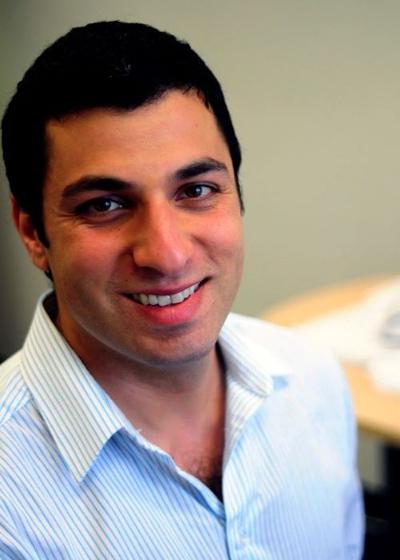
University of Southampton spin-out company Curve Therapeutics aims to discover new medical treatments by focusing on currently ‘undruggable’ biological targets, using cutting-edge tools capable of generating and screening millions of molecules.
Ali Tavassoli, Professor of Chemical Biology and Curve Therapeutics’ Chief Scientific Officer, talks about the research behind the company’s innovative approach and his experience of taking it into the commercial world.
What area of research does your new company draw on?
The interactions between proteins in a living cell, known as ‘protein–protein interactions’, have a key role in healthy cell function, but also control the development of diseases such as cancer. My University research team works at the interface of chemistry and biology, with its main focus being on the development of new methods for generating and screening libraries of hundreds of millions of molecules. We use these platforms to control protein–protein interactions that play a role in disease, and we have been able to target interactions that have traditionally been seen as ‘undruggable’. My lab has already reported a number of compounds that could form the basis of new treatments; through Curve Therapeutics we aim to bring these treatments to the clinic.
What is the potential impact of your discoveries so far?
A key discovery from the lab is a compound that could be a real game-changer in cancer therapeutics. It targets a protein called hypoxia-inducible factor (HIF), which acts as the sensor for low oxygen conditions within cells. It’s also the responder, so if the cell experiences low oxygen levels HIF will sense it and trigger a response, including changing the cell’s metabolism and sending out signals for the formation of new blood vessels.
This is an important mechanism for an embryo developing in the womb, for example, but it’s also switched on in cancer cells, which grow so rapidly that they quickly outstrip the supply of oxygen and nutrients in the surrounding area. There is a lot of evidence that inhibiting HIF function will impact tumour survival and growth in a number of cancer types. Because of this, over the years there have been many attempts to find compounds that inhibit HIF, without success, so there is quite a bit of excitement and interest about the potential for the HIF inhibitor discovered in my lab.
Has your research involved industry partnerships?
We’ve worked on multiple research collaborations with several major pharmaceutical companies over the years. These have all involved using our drug discovery platforms against biological targets that are important to the sponsoring company.
What stage have you reached on the spin-out journey?
We have secured funding from investors and Curve Therapeutics span out in July 2019. Curve staff are actively working on a number of targets for new therapies.
Do you have any previous experience of the spin-out process?
As a postdoctoral researcher at Penn State University in the United States I was part of a programme to develop new molecules for antibacterial and antifungal treatments, and one of the compounds we developed made it to the market. The spin-out company, Anacor Pharmaceuticals, was later bought by Pfizer for $5.2bn, so I have some prior experience of the process, albeit in a more junior position as a postdoc.
How did the University support you on the journey towards spinning out Curve Therapeutics?
I received support from the University’s Research and Innovation Services (RIS) and Future Worlds, both of which were extremely helpful. They introduced me to mentors with commercial experience, both inside and outside the University, and I’ve found seminars run by Future Worlds very useful.
